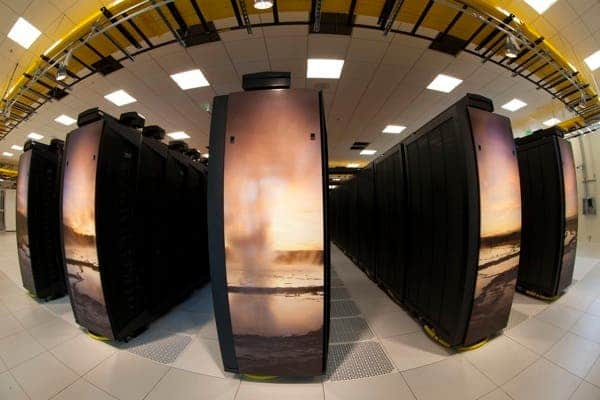
While climate change may be a subject of intense debate with equally enthusiastic supports on both sides of the fence, one thing anyone, no matter their side, shouldn’t argue is allocating resources for its study. Just recently, one of the most powerful tools for studying the planet’s climate in great detail has been powered up – the “Yellowstone” 1.5 petaflops supercomputer, which has already been listed under the top 20 supercomputers in the world list.
The system went live at the NCAR-Wyoming Supercomputing Center in Cheyenne, Wyoming where it was met with bold enthusiasm by meteorologists and geoscientists stationed there, and from the rest of the world for that matter. Yellowstone promises to aid scientists in performing complex climate models which should allow for studying anything from hurricanes and tornadoes to geomagnetic storms, tsunamis, wildfires, as well as locating resources such as oil miles beneath the Earth’s crust.
People “want to know what [climate change] is going to do to precipitation in Spain or in Kansas,” said Rich Loft, the director of technology development at the center.
The supercomputer can perform computations at 1.5 petaflops, which translates in a staggering 1,500 teraflops or 1.5 quadrillion calculations per second. Just so you can get an idea of both the kind of upgrade Yellowstone offers and the degree of technological advancements witnessed in the past few years, consider that NCAR’s previous supercomputer, Bluefire, which was commissioned in 2008, peaked at 76 teraflops, yet still it was one of the most powerful supercomputers of its day.
The $70 million data center is comprised of 100 racks with 72,288 compute cores from Intel Sandy Bridge processors, a massive 144.6 terabyte storage farm and a system for visualizing all of its data.
A powerful tool for predicting our planet’s climate
All these numbers might not mean very much to you, but if you put its tasks into context, you suddenly become impressed. For instance, a short-term weather forecast which would typically require a few hours to complete for Bluefire, can be rendered in mere minutes by Yellowstone. But it’s not in speed where Yellowstone shines, but in the complex tasks it can undertake. Scientists typically create climate change models of a particular region by arranging it in 100 km wide grids, yet Yellowstone is capable of refining the resolution to as much as 10 km. This significant improvement allows for a more detailed and accurate assessment of climate change closer to reality.
“Scientists will be able to simulate these small but dangerous systems in remarkable detail, zooming in on the movement of winds, raindrops, and other features at different points and times within an individual storm. By learning more about the structure and evolution of severe weather, researchers will be able to help forecasters deliver more accurate and specific predictions, such as which locations within a county are most likely to experience a tornado within the next hour,” according to a NCAR statement.
Currently, 11 research projects have already been planned to make use of Yellowstone “to try to do some breakthrough science straight away and try to shake the machine,” according to NCAR officials.
Was this helpful?



